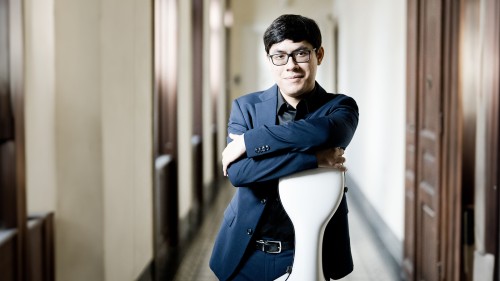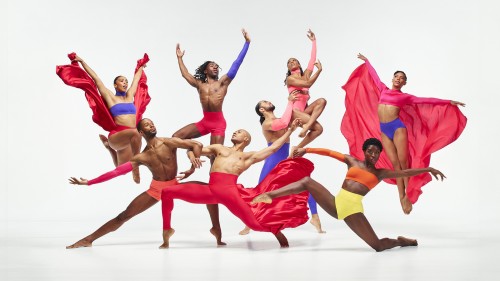
Zlatomir Fung, cello and Chaeyoung Park, piano
in Groton, MA
This site uses cookies to measure our traffic and improve your experience. By clicking "OK" you consent to our use of cookies.
Room-shaking power and soul-soothing poetry come together during Evgeny Kissin’s return to Symphony Hall. Bach's Partita No. 2 for Keyboard gives way to Chopin’s contemplative Nocturnes. Shostakovich’s intense Piano Sonata No. 2 pairs with selections from his homage to Bach, his 24 Preludes and Fugues.
Evgeny Kissin has been a Celebrity Series audience favorite for decades, since he was a young prodigy: his artistry has only deepened over the years, and he delivers a reliably brilliant and illuminating performance every time. Don’t miss a modern master of the keyboard when Evgeny Kissin returns for his twelfth Celebrity Series recital!
I. Sinfonia
II. Allemande
III. Courante
IV. Sarabande
V. Rondeau
VI. Capriccio
After serving several contentious years as Kapellmeister in the small city of Cöthen, in 1723 Bach successfully applied for the position of Cantor at the prestigious Thomasschule in Leipzig. Though the position became closely associated with Bach, he almost failed to get the job. He was ambivalent about the title, which he saw as a step down, and the interviewing council found him underwhelming. The council reluctantly offered Bach the post after several applicants dropped out.
His many duties, including overseeing music for Leipzig’s largest churches, left him little time to compose secular works. Bach’s solo keyboard output sharply declined but he eventually returned to the form. In the late 1720s he composed and self-published several collections of dance suites for keyboard, including several partitas, or suites. These were Bach’s first publications of keyboard music and among the last keyboard suites he composed.
The C-minor Partita opens with a Sinfonia, a three-part work containing counterpoint. The first section, a weighty slow introduction, gives way to a middle with a florid upper line and a walking bass accompaniment. The Sinfonia closes with an urgent fugue. Next are a graceful, ornamented Allemande and a brief but unusually fiery Courante.
Bach composed more sarabandes than any other dance type. The dance originated in Latin America and moved to Spain, where it was banned for its obscenity; one Jesuit priest called the sarabande “a dance and song so loose in its words and so ugly in its motions that it is enough to excite bad emotions in even very decent people.” Baroque composers like Bach defanged the sarabande, recasting it as a slow, courtly dance. Following a spritely Rondeau, the partita concludes with a fugal Capriccio.
- Andrew McIntyre
Nocturne in C-sharp minor, Op. 27, no. 1
Nocturne in A-flat Major, Op. 32, no. 2
Scherzo No. 4 in E Major, Op. 54
Left stateless after the failed Polish revolt against the Russian Empire, Chopin built a new life in Paris. There his reputation as a teacher and a performer grew. Yet he eschewed public concerts, choosing instead to give intimate performances in the exclusive Parisian salons. He became so renowned among the upper-crust that fellow composer Hector Berlioz complained, “Unless you are a prince, a minister, or an ambassador, you might as well give up hope of hearing him.” As a composer, Chopin turned away from flashy concert hall genres like variations and concertos. Instead, he wrote small character pieces like the mazurka, the étude, and the nocturne.
As Chopin scholar Jim Samson writes, “The genre title ‘nocturne’ was fairly commonplace in early nineteenth-century piano music, influenced no doubt by the enhanced cultural status of the night…, and also by the growing importance of the salon as a site of pianism. In the hands of [Irish composer and father of the nocturne] John Field and Chopin it came to be associated with a pianistic style shaped by vocal imitation.”
Both nocturnes on tonight’s program open with the typical “nocturne sound”: a songlike melody supported by arpeggios in the left hand. The C-sharp minor Nocturne contains two melodic lines in the right hand, a quasi-operatic duet for soprano and contralto. Not to be outdone, the A-flat major Nocturne opens with a filigreed cantabile melody. The second themes of both nocturnes are, by contrast, faster and more agitated.
While he worked to build a career in Paris, Chopin also set his sights on marriage. In 1836—sandwiched between the composition of the Opus 27 and 32 nocturnes—he proposed to Maria Wodzińska, the daughter of a Polish count. Their engagement was short-lived: Maria’s overbearing mother, concerned by Chopin’s chronic illness, called the engagement off within a year. After the rupture, Chopin placed their letters into an envelope, labeled it “My sorrow,” and hid them in his desk.
A short time later, Chopin met the woman who would become his final lover and later caregiver. The writer Amantine Lucile Aurore Dupin (pen name George Sand) made a decidedly unfavorable impression when they met in one of the salons. “What an unattractive person La Sand is,” Chopin wrote. “Is she really a woman?” But when the pair reconnected a year later, they began an intense affair. In the summers she offered a respite from the Parisian heat at her summer home in Nohant. Here Chopin composed some of his greatest late works, including the Scherzo No. 4, written in 1842.
Of Chopin’s four scherzos, only the Fourth is predominantly in a major key. The work opens with a sunny melody played in block chords. Interspersed between sprightly, virtuosic sections are gloomy, nocturnesque passages: wistful melodies float above left-hand arpeggios. In the end, sunshine triumphs over rain. The spirited coda concludes with an ebullient upward flourish.
- Andrew McIntyre
Like many Soviet artists of his era, Shostakovich had an uneasy, volatile relationship with the Stalinist government. In the twenty years before Stalin’s death, Shostakovich was lauded as the great hope of Soviet opera; celebrated and subsequently condemned for his opera Lady Macbeth of the Mtsensk District; hailed as a patriotic hero for the “Leningrad” Symphony; condemned again, this time in the infamous Zhdanov Decree of 1948; awarded money, a country home, and two Stalin Prizes; and sent abroad as a cultural ambassador. One of these trips took him to Leipzig, where he served as a judge in a Bach bicentennial festival. This festival and a performance of Bach’s Well-Tempered Clavier inspired Shostakovich to compose his own set of Twenty-Four Preludes and Fugues.
Shostakovich completed the cycle, his largest work for solo piano, in February 1951. A month later, he performed half of it before a large audience of the Soviet Composers’ Union. The cultural repression of the period was on full display: “We must decisively warn Shostakovich,” an official admonished after the performance, “and all those other composers who have not yet broken with all traces of the modernistic past, from indulging in these extremely undesirable relapses.”
The union of prelude and fugue into a dualistic genre occurred in the second half of the Baroque era; the Well-Tempered Clavier further entrenched this juxtaposition. In the nineteenth century, composers including Chopin separated the two forms again, writing discrete preludes (Shostakovich wrote a set of twenty-four preludes just after completing Lady Macbeth). The lively prelude in D-flat major is a carnivalesque waltz typical of the composer. The D-minor fugue, by contrast, opens in hushed austerity. At first resolutely monochromatic, it grows increasingly dissonant as it soldiers on at a steady walking tempo. Shostakovich borrows a rocking eighth-note figure from Jewish folk music for the second subject. He had long been interested in Jewish music, particularly its mood of “laughter through tears.” Forced to compose outwardly triumphant propaganda pieces for a regime he despised, Shostakovich likely empathized with this sentiment. As the subject develops, it grows agitated, rising into the top of the piano’s range. A thundering climax follows, yet the music seems robbed of any triumph.
© 2025 Andrew McIntyre
No. 15 in D-flat Major
No. 24 in D minor
Program note to come
“The clarity of his playing and voicing was revelatory, but at the service of making this overlooked piece shine with commanding brilliance. ”
The ArtsFuse

in Groton, MA




Co-sponsored by Ágora Cultural Architects.

Stay in touch with Celebrity Series of Boston and get the latest.
Email Updates Sign up for Email Updates